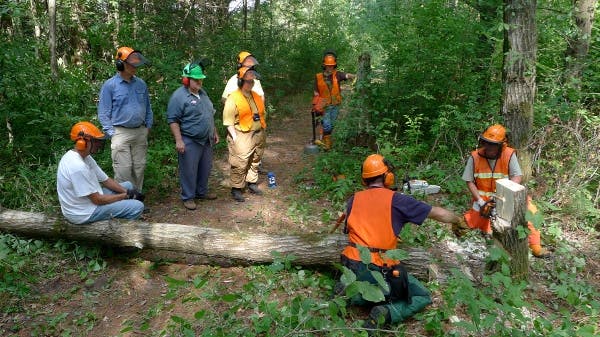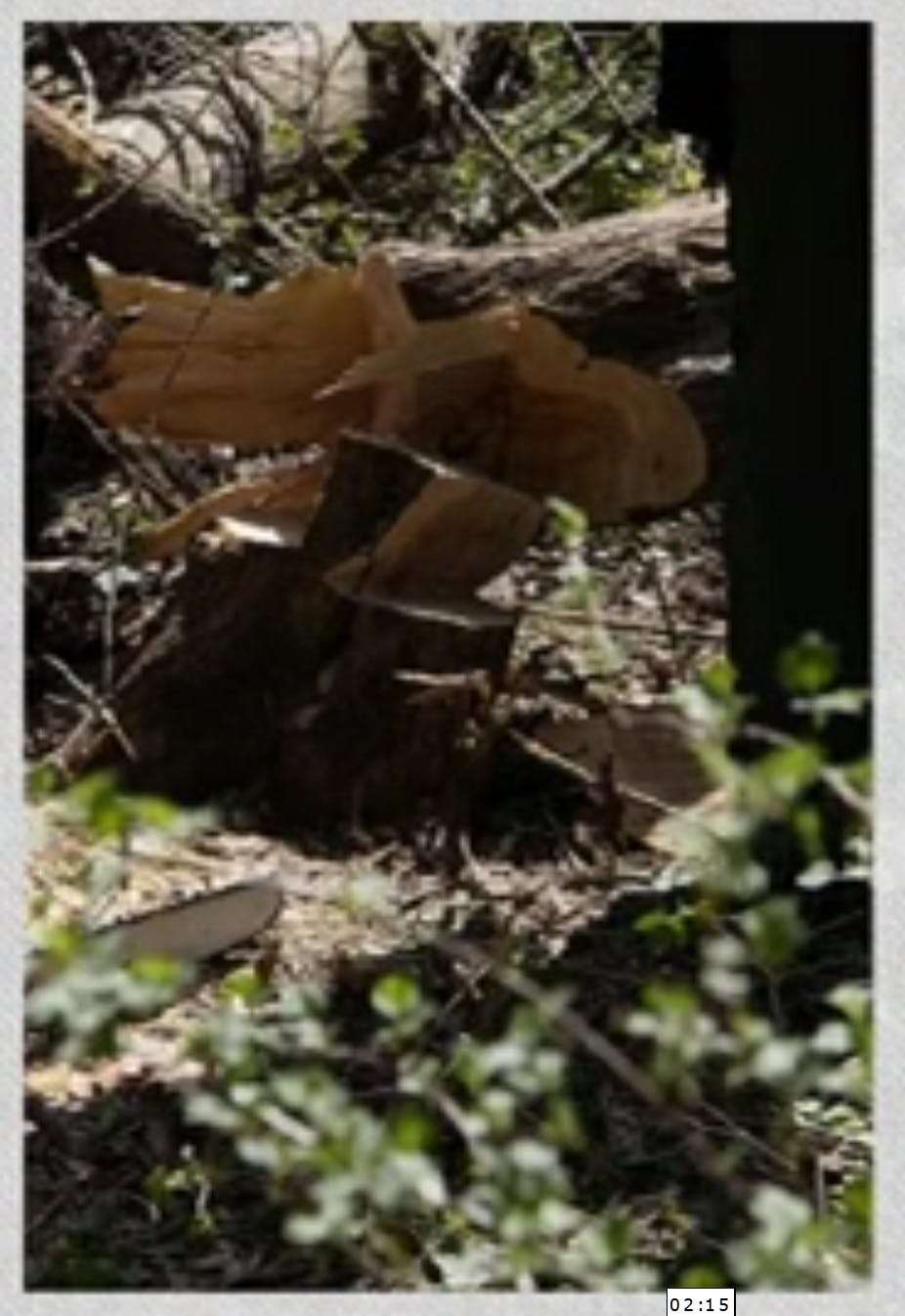Tips and Tricks
Personal Protective Equipment What's What?
 |
Personal Protective Equipment (PPE) has to be an integral part of our everyday workplace safety plan. Here is a review of some important facts about personal protective equipment while operating a chainsaw.
Most of us have probably been told - or at the very least heard about - the necessity of wearing proper personal protective equipment when we use our chainsaws. It gives us that last line of defense in preventing injury, or at the very least, reducing the severity of them. The most important items of ppe include a hard hat, hearing and eye protection, leg protection, and foot protection. Other types of protection out there include cut resistant gloves, and upper body protection provided by shirts and/or jackets that contain cut resistant materials.
However, knowing what to wear is only half of the formula. Knowing when to replace it is equally important. Wearing defective or outdated equipment gives a false sense of security - not to mention inadequate protection when we need it.
So here are some facts that need to be considered when analyzing the ppe we bring to the job every day.
- Hard hat- most manufacturers recommend replacement of hard hats after 5 years after the date of manufacture. Other factors that reduce the life expectancy of helmets include exposure to ultra-violet rays, marking on them with magic markers, placing stickers on them that are not approved to be placed on plastic (that would include almost every sticker available), dropping them on hard surfaces, cleaning with harsh chemicals, or drilling holes in them for ventilation. There is also a disclaimer that comes with each helmet that should be read to be sure all information available is covered.
- Hearing protection – ear muffs need to be maintained by removing the protective liners inside the muff and cleaning it occasionally. Also, the seal around the outside usually gets damaged in cold weather, so they should be replaced when damaged. Ear plugs also need to be replaced on a regular basis. Sponge type plugs should be replaced daily.
- Eye protection – be sure that eye protection is in tact, not broken, visibility is good, and is adequate for your particular needs. ( Remember, if eye glasses or goggles are worn, they must include safety lenses and provide peripheral protection.)
- Leg protection – leg protection needs to meet certain criteria in order to provide adequate protection. It is required that the equivalent of 4 layers of protection be used, and 6 layers of protection is recommended. Those layers must stay intact to provide maximum protection, so any time the inside layers of the protection are cut, the chaps or pants must be replaced. Patching them is not an option. They must also fit properly, so the protective layers must extend from the top of the thigh to the top of the work boot. We recommend they extend slightly over the top of the work boot for maximum protection. And they must be kept clean - so wash them according to the manufacturers recommendations, which are usually attached to the garment.
- Foot protection – work boots with cut resistant material and steel toes are recommended to protect our feet from chainsaw cuts, and heavy objects pinching our toes. How many times has it happened that logs roll after they’ve been cut and our feet somehow get in their way?
None of us want to get injured while on the job, and there are generally two ways to reduce that possibility – good technique, and good ppe. Proper training along with purchasing and maintaining good ppe will certainly keep us safer!!
Identifying and Dealing with Hazards
What to watch out for when felling a tree
 |
This message is about an accident that occurred to a logger recently. As we provide training to the loggers in the woods, landowners, or anyone else that uses a chainsaw, the one thing we emphasize more than anything else is safety. And one of the most important safety issues is recognizing hazards that will potentially cause an injury and then avoiding, controlling, or removing them to reduce the potential for injury.
The problem that chainsaw operators always encounter is the urge to take shortcuts. And when we decide where the shortcuts will be taken, it is almost always about sacrificing safety to get the job done as quickly as possible. Examples might be taking two steps away from the tree as an appropriate escape distance, when we know better. Or starting to buck before checking for loose limbs overhead. Or not removing dead stubs or potential hazards in the trees intended landing area. Remembering the five elements of any felling plan, (hazards, lean, escape route, hingewood, and cutting plan,) that identifying hazards and establishing AND USING an appropriate escape route is always stressed. Remember, there isn’t a tree out there that is worth cutting if hazards identified are not able to be removed or avoided.
With sketchy descriptions of one of the accidents that occurred, it seems the sawyer cut a tree down in which there was another tree leaning into or entangled within it. As the tree fell, the sawyer backed up but didn’t realize the tree that was entangled also fell or was pulled and became partially airborne as the two trees fell. The sawyer was struck in the back and shoulders with the second tree, and sustained disabling injuries to his upper body and legs. He has missed several weeks of work.
Since this information is second hand, I’m not sure how accurate it is, but it can describe a circumstance that anyone cutting with a chainsaw can encounter. So how can we avoid the injury in this situation?
- Make sure ALL hazards are identified before the project is started.
- Make every effort to remove the hazards if possible.
- If you can’t avoid it, control it. (example: directional felling the tree to avoid potential hazards in the original landing site. If you’re cutting firewood from a load that has been delivered to you, roll the logs down cbefore cutting them into firewood lengths to avoid kickback or dislodging logs while standing on them.)
- Avoid the hazards that cannot be removed by establishing an appropriate escape route.
- If the hazard(s) cannot be removed, controlled, or avoided, walk away from it and find a better project. IF YOUR FELLING PLAN INCLUDES FIGURING OUT IF YOU CAN RUN FAST ENOUGH TO AVOID THE HAZARD YOU PROBABLY SHOULDN’T BE CUTTING THE TREE!!!
It is absolutely required that safety be an integral part of your workday. No one wants to get injured, so BE SAFE OUT THERE!!
OSHA Chainsaw Safety Recom- mendations
Working safely with chainsaws
 |
The chainsaw is one of the most efficient and productive portable power tools used in the industry. It can also be one of the most dangerous. If you learn to operate it properly and maintain the saw in good working condition, you can avoid injury as well as be more productive.
Before Starting the Saw
- Check controls, chain tension, and all bolts and handles to ensure they are functioning properly and adjusted according to the manufacturer's instructions.
- Fuel the saw at least 10 feet from sources of ignition.
- Check the fuel container for the following requirements:
- Must be metal or plastic
- Must not exceed a 5 gallon capacity
- Must be approved by the Underwriters Laboratory, Factory Mutual (FM), the Department of Transportation (DOT), or other Nationally Recognized Testing Laboratory.
While Running the Saw
- Keep hands on the handles, and maintain secure footing while operating the chainsaw.
- Clear the area of obstacles that might interfere with cutting the tree or using the retreat path.
- Do not cut directly overhead.
- Shut off or release throttle prior to retreating.
- Shut off or engage the chain brake whenever the saw is carried more than 50 feet, or across hazardous terrain.
- Be prepared for kickback; use saws that reduce kickback danger (chain brakes, low kickback chains, guide bars, etc.).
Personal Protective Equipment
Chainsaw Safety Equipment Requirements
Personal protective equipment (PPE), for the head, ears, eyes, face, hands, and legs are designed to prevent or lessen the severity of injuries to loggers and other workers using chainsaws.
- PPE must be inspected prior to use on each work shift to ensure it is in serviceable condition
- The following PPE must be used when hazards make it necessary:
- Head Protection
- Hearing Protection
- Eye/Face Protection
- Leg Protection
- Foot Protection
- Hand Protection
Chainsaw Safety Training
Employers involved in tree removal/logging are required to assure that their employees are able to safely perform their assigned tasks. When loggers are trained to work safely they should be able to anticipate and avoid injury from the job related hazards they may encounter.
Chainsaw Safety Training requirements include:
- Specific work procedures, practices and requirements of the work site, including the recognition, prevention, and control of general safety and health hazards.
- Requirements of the OSHA Logging standard, Bloodborne Pathogens standard, First Aid, and CPR training.
- How to safely perform assigned work tasks, including the specific hazards associated with each task and the measures and work practices which will be used to control those hazards.
- How to safely use, operate, and maintain tools, machines and vehicles which the employee will be required to utilize in completing the assigned requirements.